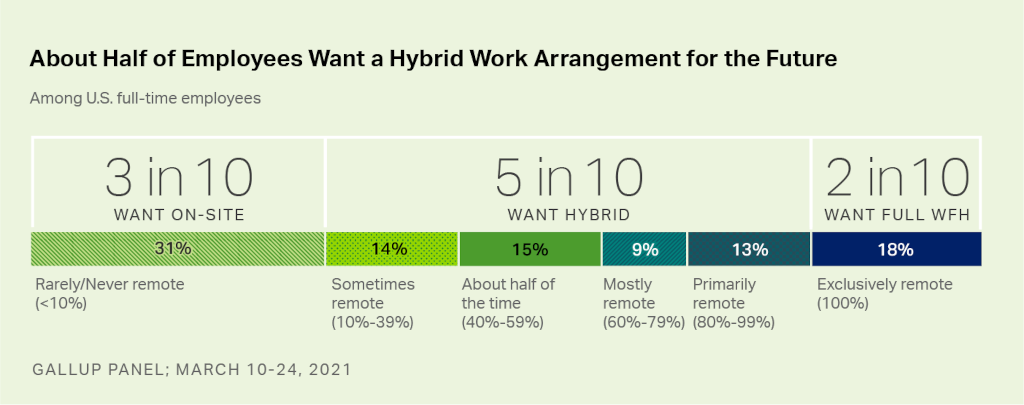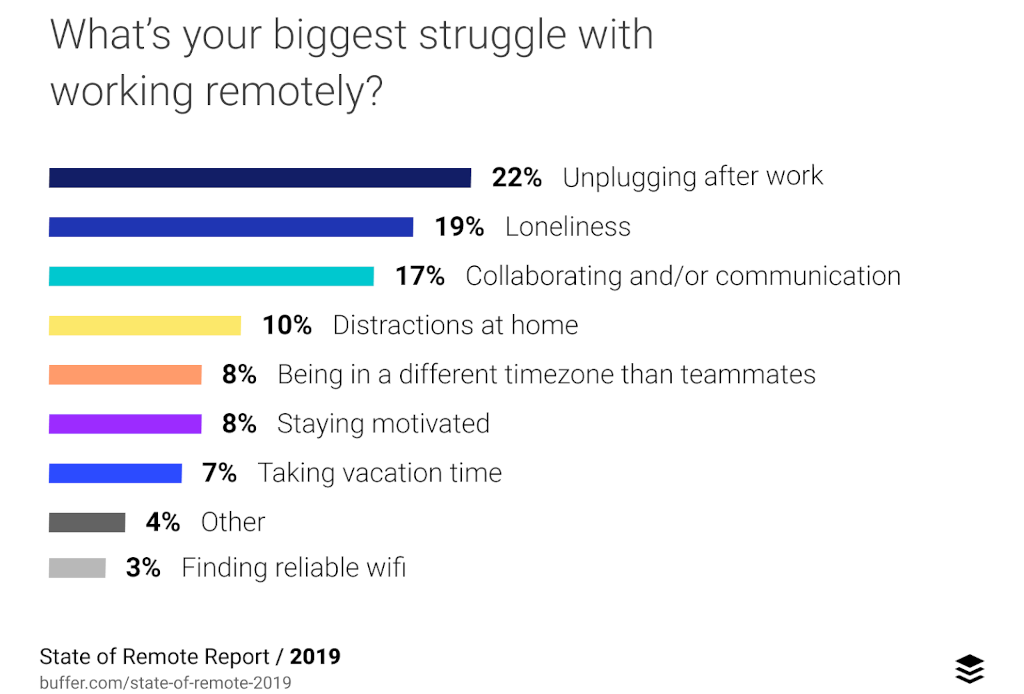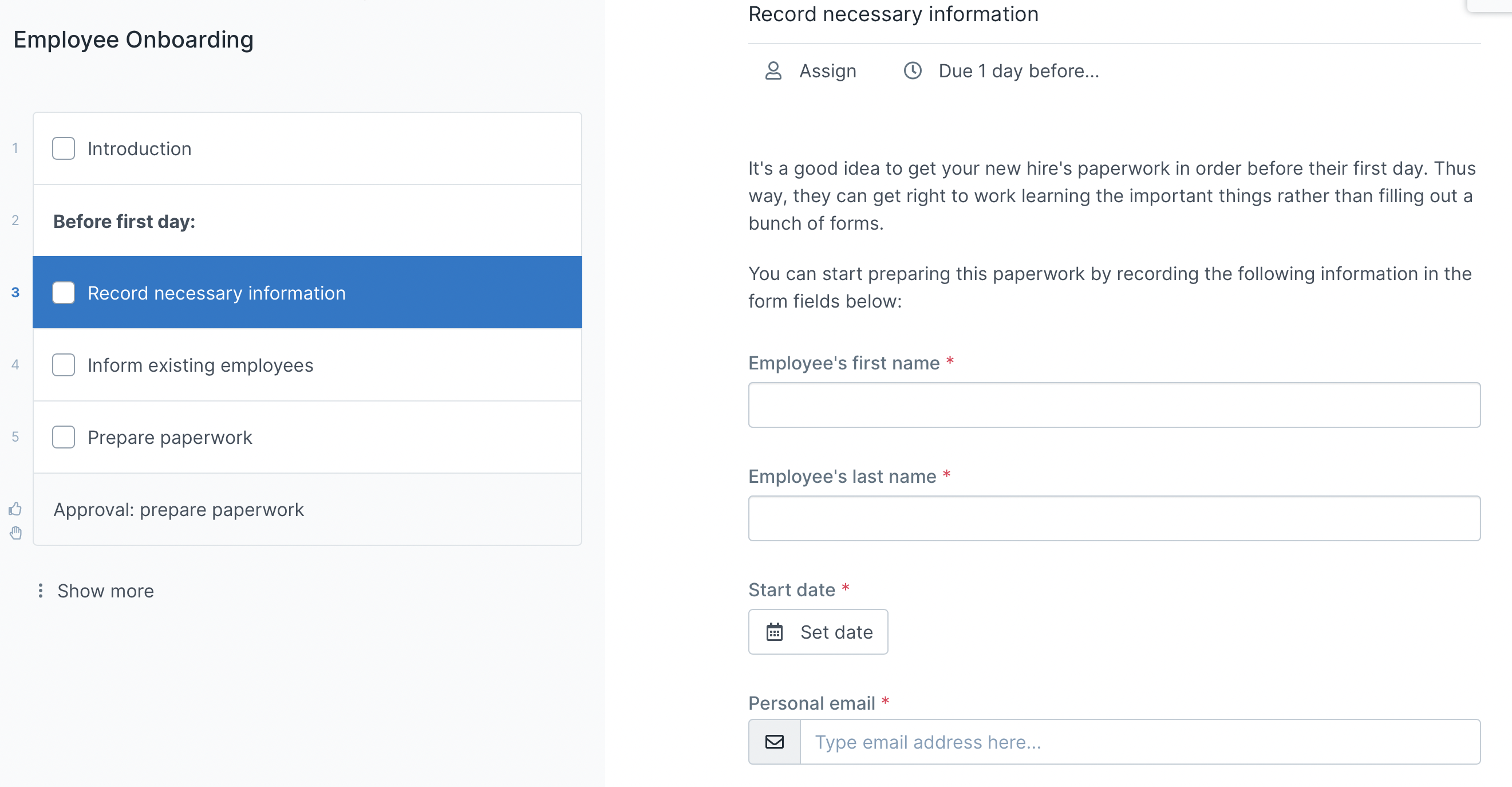
Kevin Payne is a content marketing consultant at Leadhackrs that helps software companies build marketing funnels and implement content marketing campaigns to increase their inbound leads.
2020 shook up the whole notion of work/life balance – not to mention what it actually meant to “work from home”. What had previously been a luxury available in only a few industries suddenly became a health and safety requirement for nearly the entire global population.
In a post-COVID world, however, not everyone has been eager to jump straight back into the office. While employees enjoyed the freedom and flexibility their WFH setups allowed (minus the interruptions of pets, children, and partners), employers also appreciated the benefits of lower maintenance costs and a bit more flexibility in their own lives as well.
In the early days of lockdown, the question on everyone’s mind was: When will we go back to work? After lockdown, the question has become: How do we want to work?
This Process Street post will look at that, and cover the following areas:
- Why are hybrid teams the future?
- Steps to build and grow a hybrid team for your business
- The most vital element of creating a hybrid team
Why are hybrid teams the future?
While many are quite happy to stick with their fully remote workdays, the hybrid workplace is becoming increasingly popular for both employees and employers.
In fact, according to a Gallup panel from earlier this year, about half of surveyed employees report that they would prefer a hybrid workplace. This means they want some days spent in the office, while other days they’re free to work from home or anywhere else. 
It’s not hard to see the appeal of a hybrid workforce. Many workplaces that may adopt the hybrid team setup are able to work mostly asynchronously, only meeting on designated hours or days.
This frees up a lot of typical business hours for many things employees can now do: from staying on top of personal errands, keeping up medical commitments, or even being more present for family activities like school drop-offs.
Employers themselves reap the rewards of enabling more freedom and flexibility. For one thing, operational costs like maintaining an office lease can be offset. They may move to a coworking space with a set number of seats a day, or might only rent out conference rooms for meetings when needed.
Employers are also building up their team from a place of trust. Because employees aren’t tied to “body in seat productivity,” team members can feel like they’re being valued and trusted by their managers.
They aren’t prone to feeling like their employers watch every move they take or need their approval for every minute of the day. With hybrid work, you empower your employees to take responsibility and to contribute as effective members of the company.
Despite the challenges it takes to transition to a successful hybrid team, it’s worth exploring to keep reaping those benefits that keep employees engaged without risking business productivity.
In the next section, we’ll guide you through the steps to build and grow a hybrid team for your own business.
Steps to build and grow a hybrid team for your business
Ready to transition to a hybrid team in the new normal? Follow these simple steps to get you on your way.
Tip #1: Get everyone to buy in
The very first step to transition to hybrid teams is making sure everyone gets on board the idea. This setup is more than just a choice that managers make and employees are expected to follow.
Instead, everyone has to understand why this new setup is being adopted in your company.
Some employees, for example, may prefer to stay completely remote instead of transitioning back to the office. They may have gotten used to having no commutes or saving money on gas, and are hesitant to go back to the office and take on these kinds of costs again.
On the other hand, others may not wish for remote days anymore, especially if they struggled to unplug when working from home. This inability, in addition to loneliness, were the two biggest struggles remote workers faced according to a report by Buffer. 
To successfully get your employees on board, start from a place of understanding and empathy. Acknowledge the concerns they may have about returning to the office – or not returning – every day and involve them in coming up with solutions. Change and uncertainty make everyone uncomfortable, but the more agency and control an individual has over that change, the more receptive they are.
It may even be a good idea to give employees the option. Those who want to come to the office every day are free to do so, and vice versa. Others may want to transition to a 4-day work week. Figure out the system that works best for your employees and your company.
Tip #2: Nurture your team’s growth culture
Every transition and change leads to challenges. But truly effective teams don’t dwell on the roadblocks and struggles — they adopt a growth culture and are proactive about finding and reviewing solutions.
What this means for you is to involve employees in the transition as much as you can. Talk them through your plans, or encourage people to speak up if they have their own recommendations about how to make things easier for everyone.
Give everyone a sense of responsibility, and they’ll be more engaged with the transition. In fact, it may even help your team bond as they try to solve problems together and make the new work setup better for everyone.
One hallmark of a truly efficient and strong team is the ability to grow through challenges while also growing the company with effective team collaboration.
Because of this, make it a point to model that behavior yourself in your team, and watch as people respond positively to this initiative.
3. Develop and document your processes
Documenting your new processes as you adopt a hybrid workplace can help you ease everyone into the new setup without much hassle.
By having a standard operating procedure for most things, you’re able to provide employees with a go-to guide or handbook that shows them how to proactively solve problems.
These documented processes are especially helpful when onboarding new team members as well. Once you’ve built them from scratch or using a template, it’s easy to make any kind of revisions as required, such as when processes change or when new members are added into the mix.
Check out this blog post that shows you how to create a procedure or process for your own business.

Wondering what kind of processes you might be able to document in your own company? One example may be an agency that wanted to document your hiring and onboarding process. This serves as a guide for not only any HR staff but also teams who will be welcoming new recruits and guiding them through your business operations.
From hiring to onboarding, down to initiating and ending new projects, you can create clean documented processes for company-wide workflows or team-specific projects that need to follow some kind of procedure so that nothing falls through the cracks.
Tip #4: Invest in the right tools
To truly support your hybrid team, you will have to give them the right tools that will help them do their job better. Fortunately, if your company worked remotely because of the pandemic, then you probably already have most of these tools as is.
However, it always helps to keep an eye on new tools that are constantly emerging in the market, especially for solving different needs and projects.
Below, we name some important ones you’ll want to have for any activity or job in your company:
- Cloud accounting software for your accounting team to collaborate, share, and review financial reports and projections.
- Video conferencing software like Zoom that helps remote workers stay in the loop during meetings.
- Document sharing apps like Google Docs to make collaboration easier.
- Team-ready design apps like GoDaddy Studio where graphic designers are able to view projects and collaborate on the same files without having to send raw files back and forth.
- Remote employee tracking software like Time Doctor that can help employees track and then optimize their personal productivity and performance.
- Documentation tools like Process Street that help your whole team create new workflows, apply conditional logic, and get any new processes approved by managers and authorized personnel at the business.
- Communication tools like Slack that help streamline messaging between employees, teams, channels, and even other stakeholders to your business.
To truly make sure every team has all the tools they need, you may want to have team leaders keep in touch with everyone to see what might be missing. A totally remote workplace is still different from a hybrid workplace, so some tools may be needed to bridge the gap.
At the end of the day, listen to what your team tells you they need and try to find a tool that may solve that need and keep everyone productive.
Tip #5: Maintain open communication and transparency
Just as in remote working, you need to keep your communication lines open at all times when you have a hybrid team. This is more than just during the transition too — you’ll have to keep up communication all throughout the workday.
Because of this, come up with important parameters for your internal communications. We have some guide questions here that might help you do just that:
- Are there any designated days where everyone should come to the office?
- Will all meetings be taken in person, or can some people join in via video conferencing?
- How can employees make sure they know each other’s schedules coming into the office or working remotely?
- What should employees and teams do to make sure they’re on top of other people’s leaves?
- How should employees handle filing for leaves or times when they’re away from their computers?
Just as it was a struggle to adjust to completely remote working, expect that these return when you transition to a workforce that is sometimes in the office while the rest are working remotely. But if you commit to keeping your communication lines open and accepting feedback on how to improve things, then the transition will be more manageable.
Tip #6: Prioritize your team’s health & wellbeing
During the pandemic, when people worked remotely, they reported more heightened feelings of loneliness. Of course, this was a struggle remote workers faced even before the pandemic, but social isolation during the pandemic only exacerbated these feelings — more so in employees who may have never worked from home their entire careers.
Coming off of this tumultuous time, employers must step up to make sure everyone’s health and wellness are a priority. Your team should know that you take their mental health and wellbeing seriously and that you also have the actions to support it.
For one thing, if you manage to save money from letting go of costly office leases, you might pass the savings on to a wellness fund for employees. This fund might cover anything they need to keep their health up, from gym memberships to therapy sessions or even bonuses that let them invest in better things for their wellbeing when they work from home.
This makes employees feel heard. And if you believe a hybrid workplace is best for everyone, then you’ll be putting in the efforts that support these claims.
Tip #7: Encourage team-building activities
In the previous section, we mentioned that passing on new benefits for employees to make their mental health and wellbeing a priority can help them feel valued at your business.
If benefits like these aren’t realistic yet, you can start small. Consider having optional team bonding activities, such as team-building exercises — whether in person or virtual, depending on the nature of your team.
Have an open Slack channel for non-work chats and conversations, so remote employees won’t miss out on any in-office banter and jokes. It’s all about being more human and letting your employees know that you’re a company that wants them here.
One of the most important things to remember during this step is to let employees feel like they belong in the team, even if they only see one another a few times a week. And if your hybrid team has fully remote workers from different cities, states, or countries altogether, then this becomes especially crucial to keep employee engagement high.
The most vital element of creating a hybrid team
Change is hard – especially after a pretty lengthy period of uncertainty, confusion, frustration, and general tumult in every aspect of life from buying toilet paper to side-eyeing the lady at the bus stop who just coughed.
It’s been rough on your team – but it’s been rough on you, too. Share that with them. Let them know you understand what they’ve been through and how this new transition will affect their work, their family, and their home. Reassure them that they have your support, even if the transition is a little rocky at first. In fact, tell them straight-up the transition will be rocky (it will) but you’re prepared.
At the end of the day, you’re a team. You may lead them, but every individual is essential to the success of that team. You rely on each of them for different skills, abilities, responsibilities, and experiences. Making the transition to hybrid work is no different; treating it as a collaborative team effort will make your – and your team’s – experience much, much better.
What experiences have you had building hybrid teams? How does it compare to in-person or remote? Let us know!







 Workflows
Workflows Forms
Forms Data Sets
Data Sets Pages
Pages Process AI
Process AI Automations
Automations Analytics
Analytics Apps
Apps Integrations
Integrations
 Property management
Property management
 Human resources
Human resources
 Customer management
Customer management
 Information technology
Information technology



Leks Drakos
Leks Drakos, Ph.D. is a rogue academic with a PhD from the University of Kent (Paris and Canterbury). Research interests include HR, DEIA, contemporary culture, post-apocalyptica, and monster studies. Twitter: @leksikality [he/him]